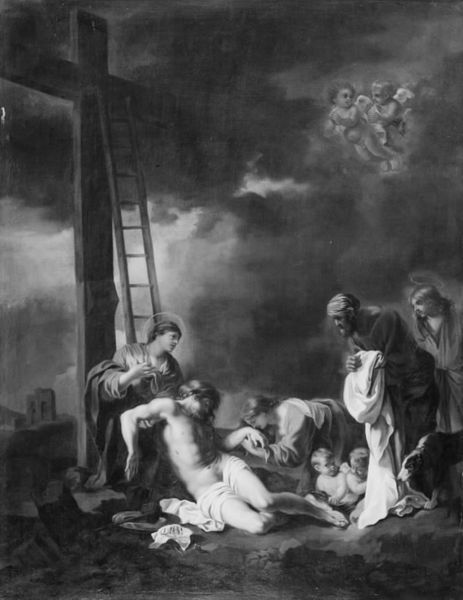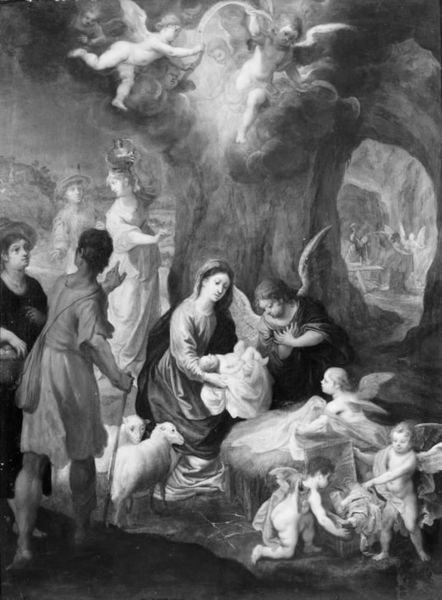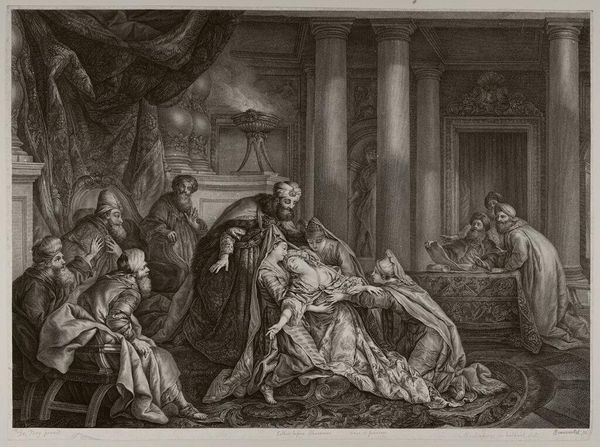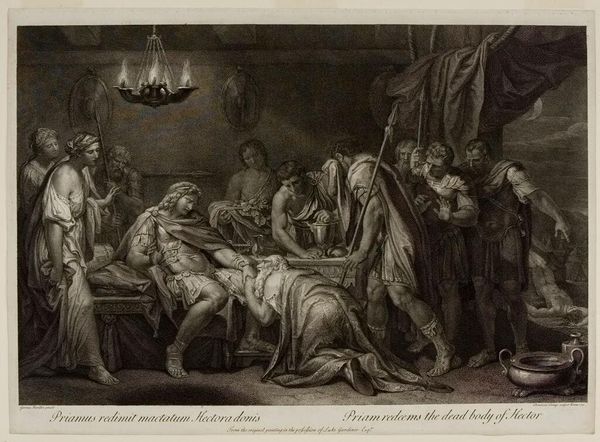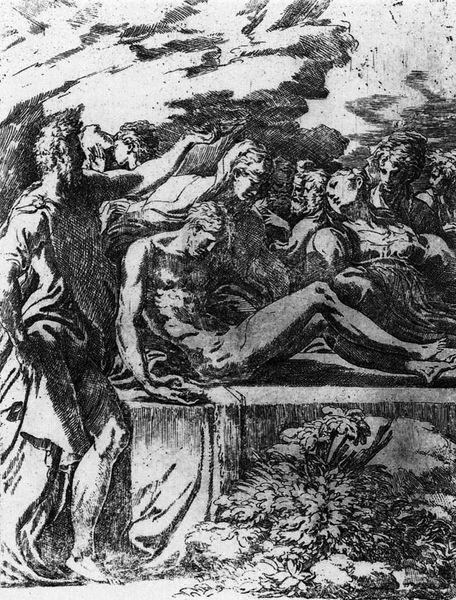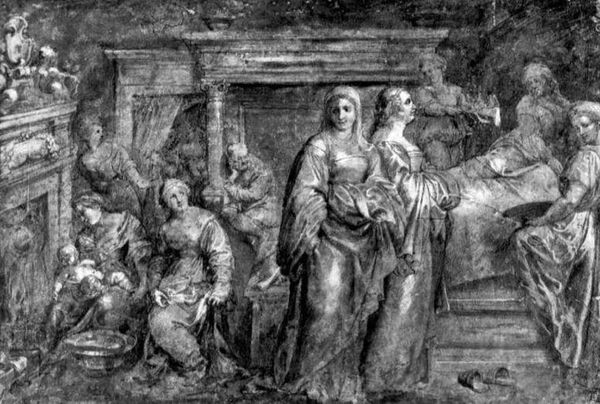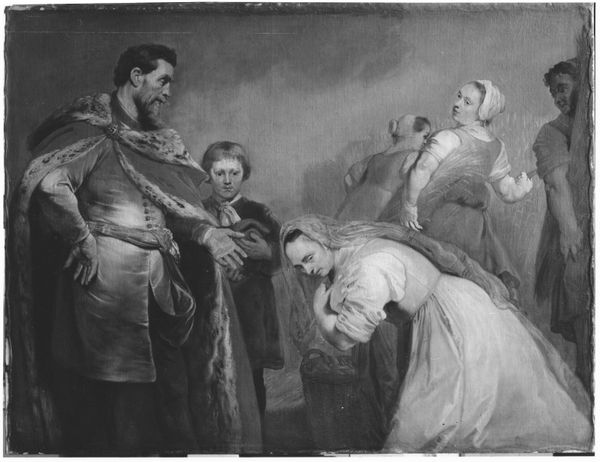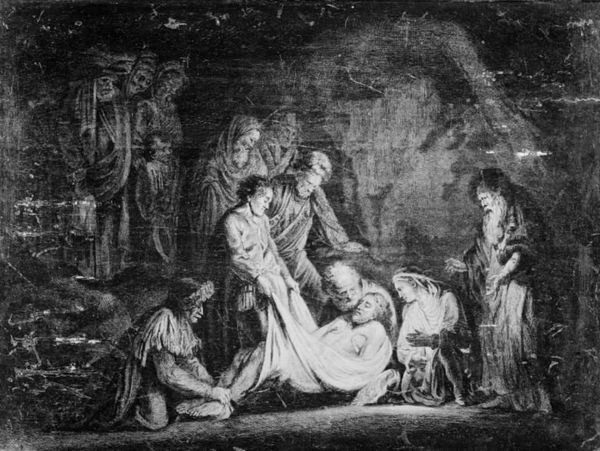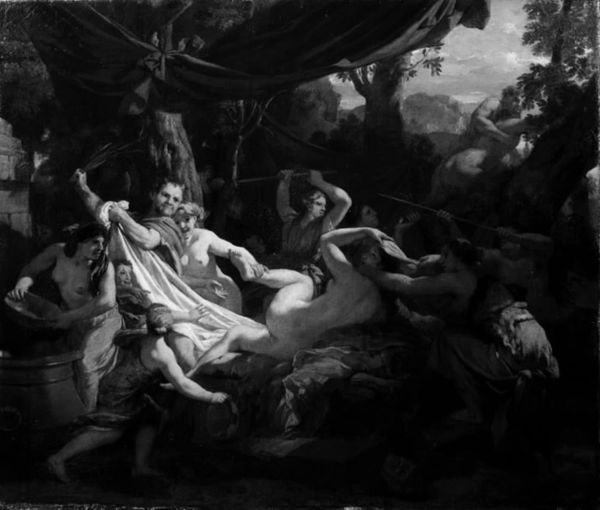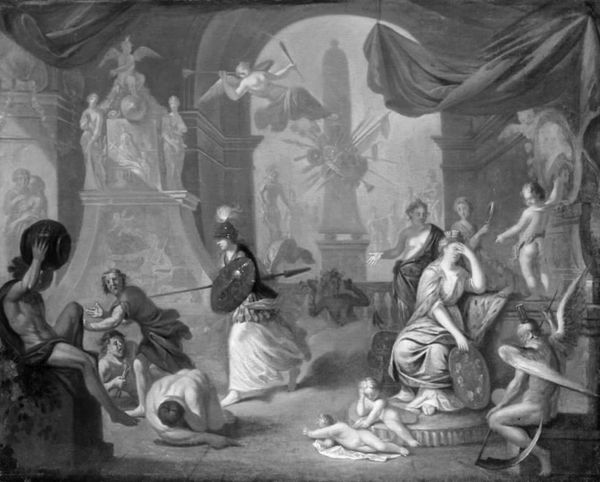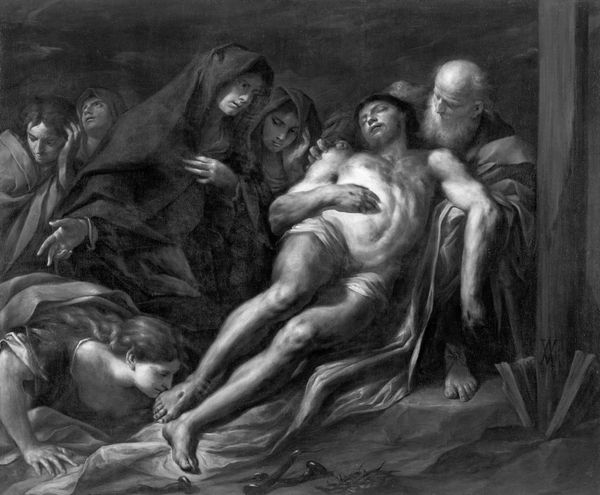
tempera, painting, sculpture
#
allegory
#
baroque
#
tempera
#
painting
#
figuration
#
sculpture
#
line
#
history-painting
#
charcoal
#
nude
#
graphite
Dimensions: 55.7 × 71 cm (21 15/16 × 27 15/16 in.)
Copyright: Public Domain
Giulio Carpioni captured this scene of ‘The Sacrifice of Polyxena’ on canvas, a tragic moment frozen in time. The painting depicts the sacrifice of Polyxena, daughter of the Trojan King Priam, a scene laden with symbolism tied to ancient Greek rituals. Notice how Polyxena is brought to kneel at the altar. The act of kneeling has appeared in countless artworks across time, from medieval devotional panels to Renaissance portraits, symbolizing submission, piety, or supplication. The image of sacrifice, though, is not unique to the Greeks. The motif can be found in ancient Egyptian art with animal offerings to deities. Here, the emotional weight of the scene—the grief-stricken onlookers, the resigned Polyxena—engages viewers on a subconscious level. The painting taps into our collective memory of loss and sacrifice, a powerful force that transcends the immediate context of the Trojan War. This non-linear, cyclical progression of sacrifice is one that resurfaces, evolves, and takes on new meanings in different historical contexts.
Comments
No comments
Be the first to comment and join the conversation on the ultimate creative platform.
